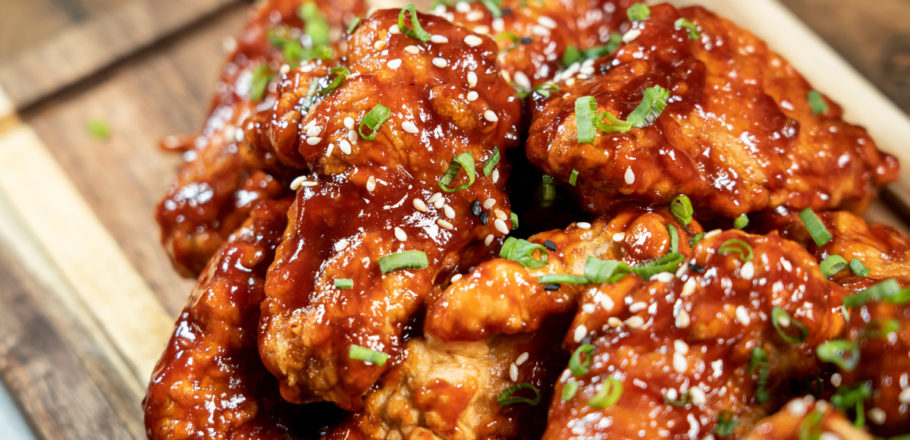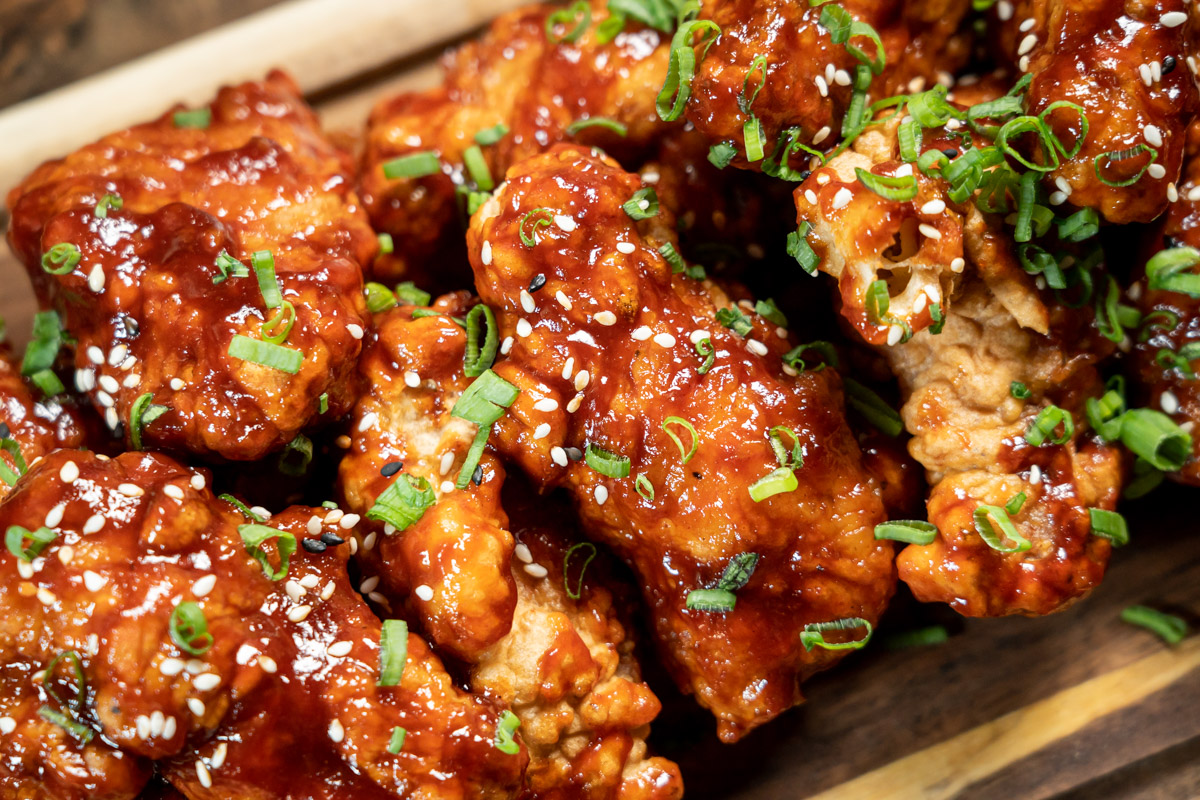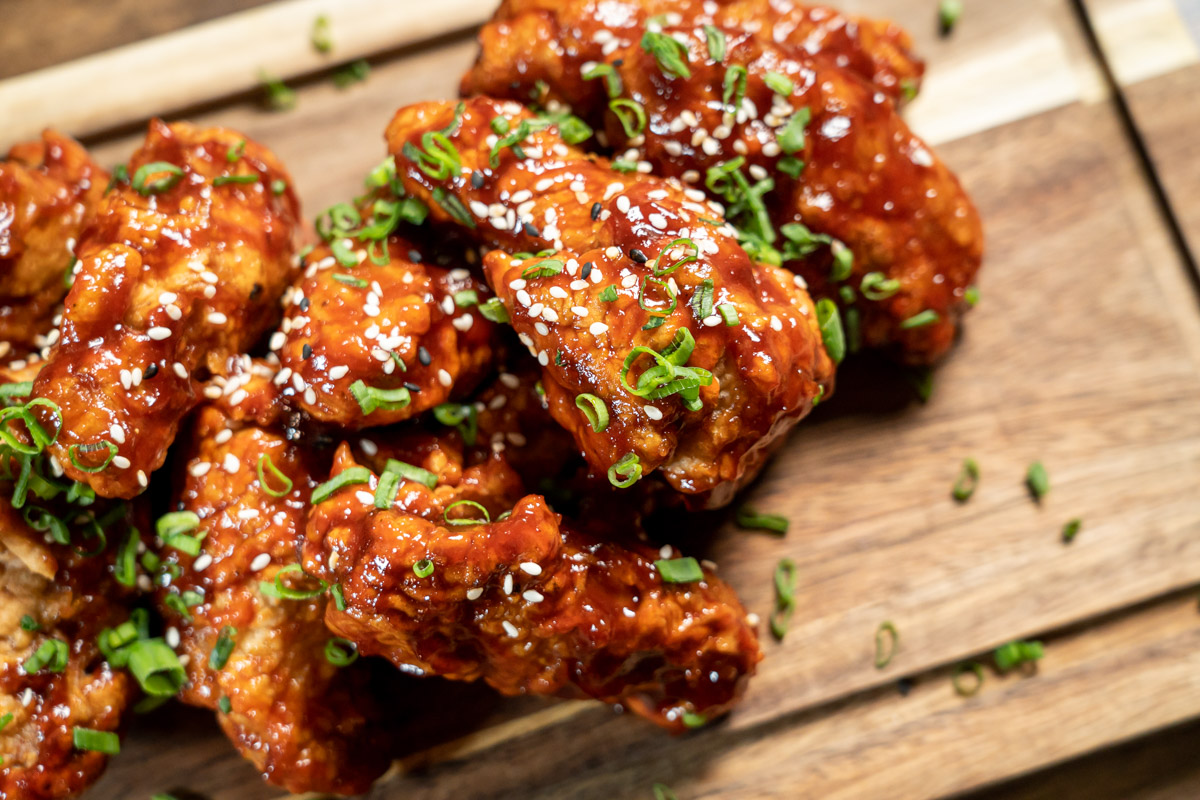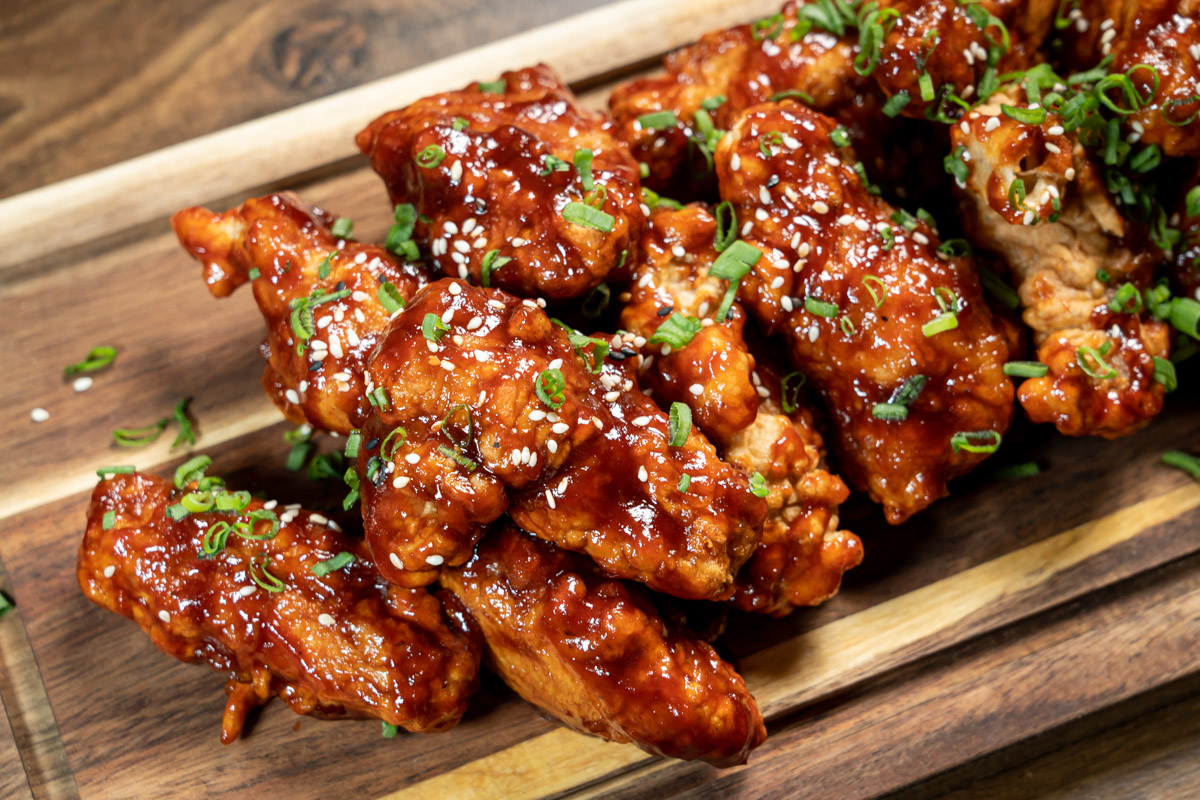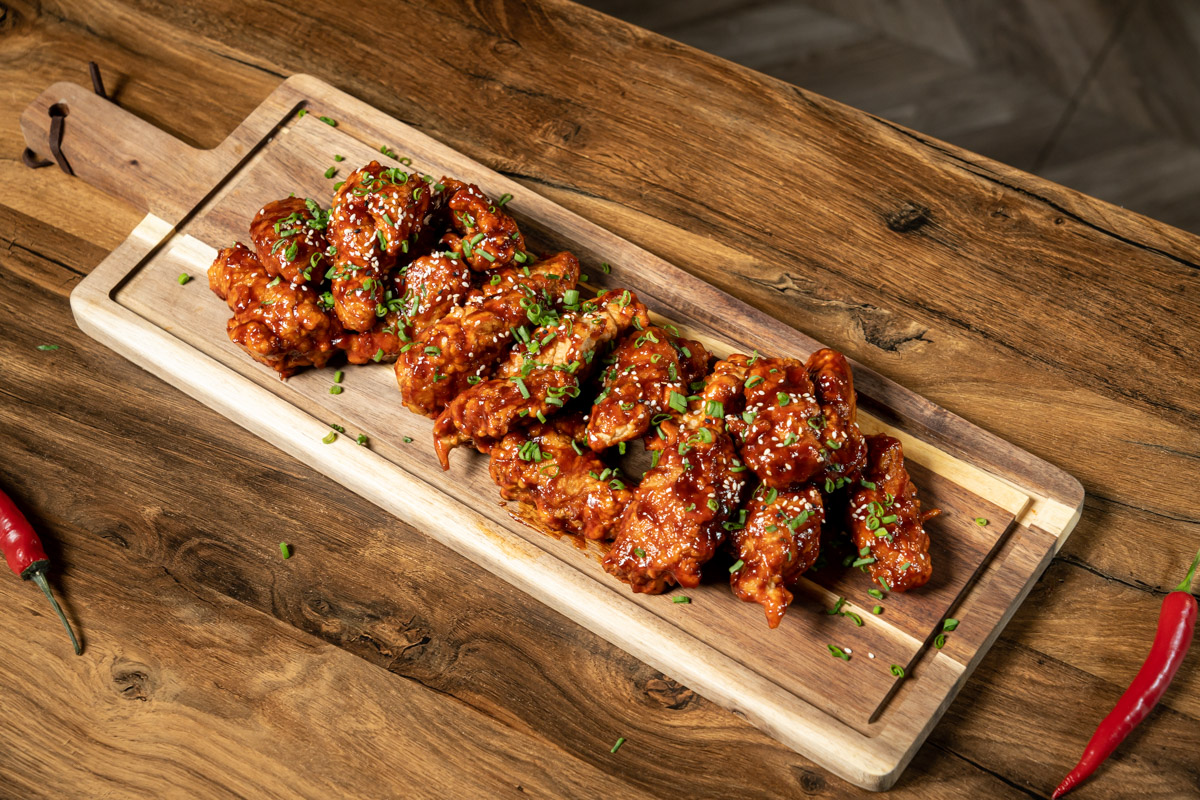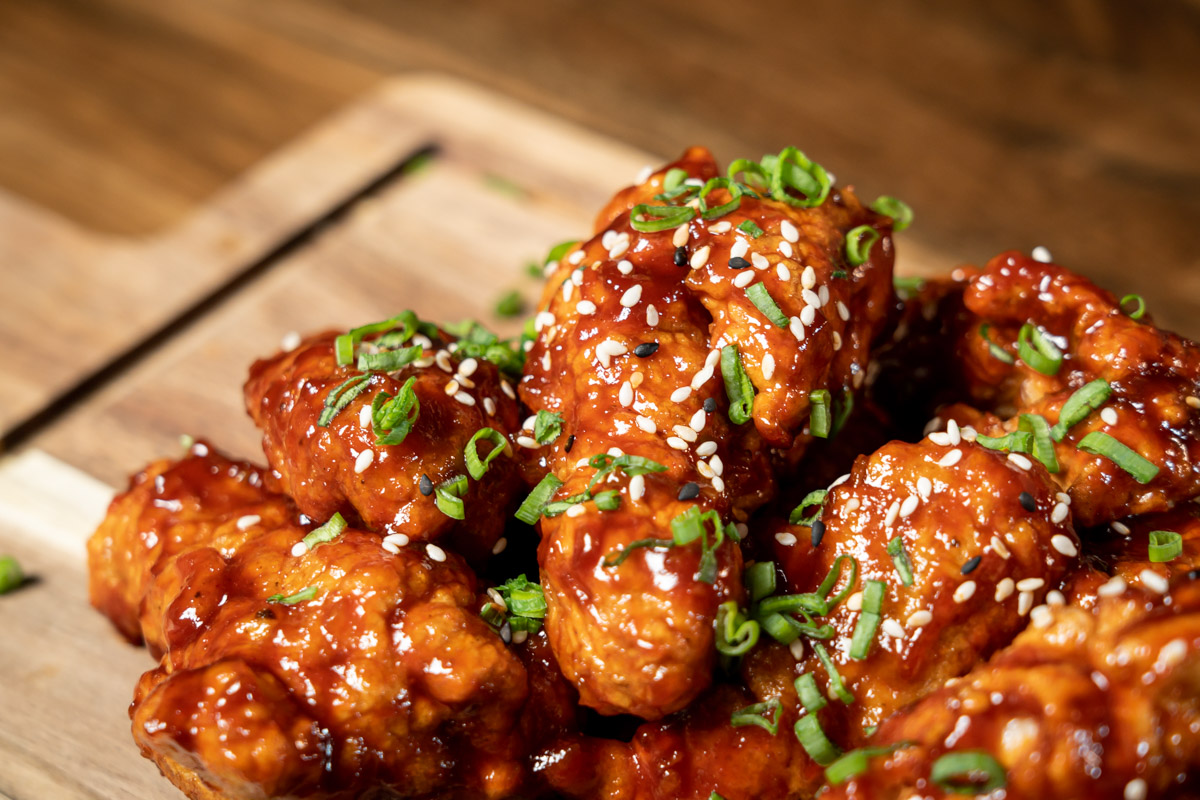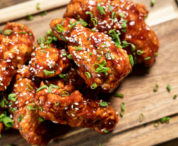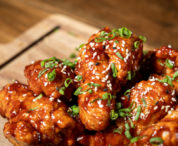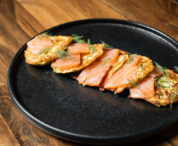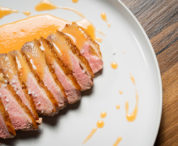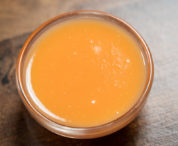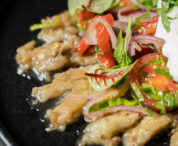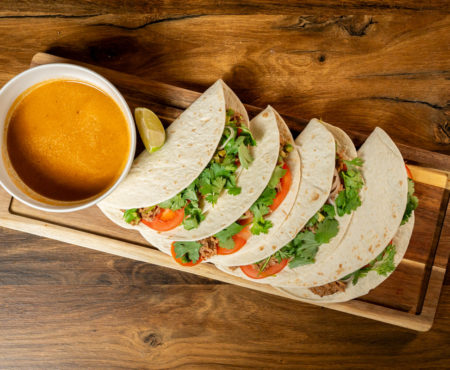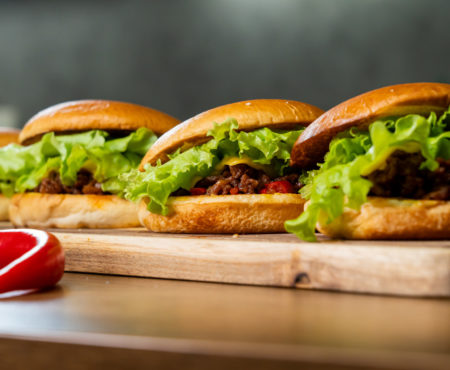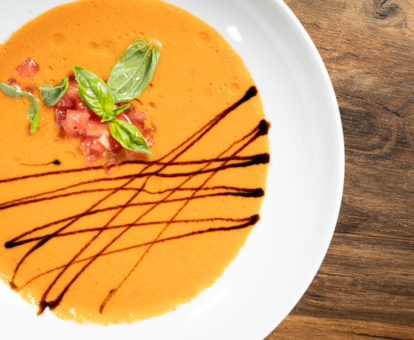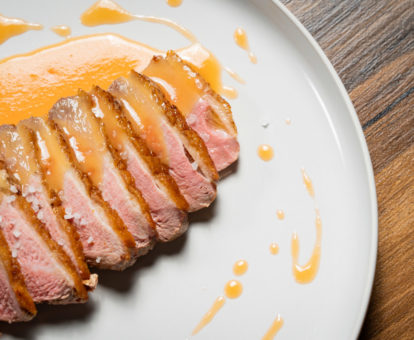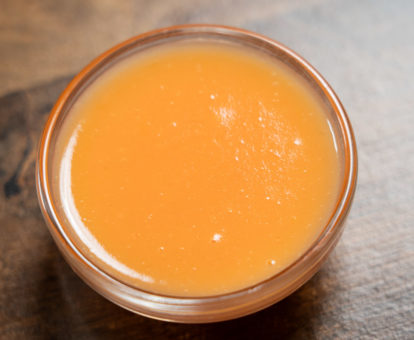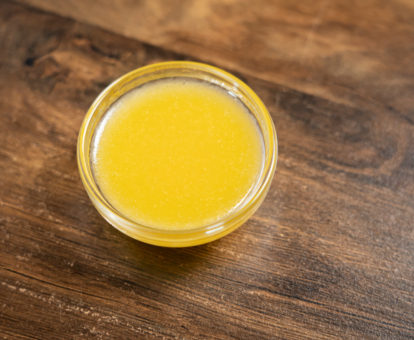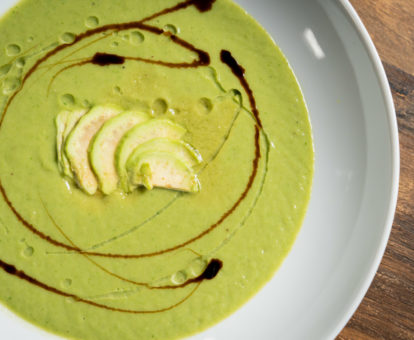The Best Korean Fried Chicken: Crispy fried chicken smothered in spicy gochujang sauce. The sauce is very easy to make and has a rich, complex flavor. You can enjoy it with rice, noodles, or stuffed bao buns. Let’s make this delicious dish for the perfect dinner together. Below is a step-by-step Korean fried chicken recipe to help you make it easy!
Creating that magical moment where the world fades away, and all that remains is the pure pleasure of a dish—this Korean Fried Chicken recipe is an enchanting experience. Crispy buttermilk fried chicken coated in a flavorful gochujang sauce, it's a symphony of textures and tastes that captivate every palate. Serve it with rice, noodles, or stuffed bao buns for an unforgettable feast.
What is Korean Fried Chicken?
Korean Fried Chicken, often shortened to KFC, is a popular Korean dish known for its crunchy and crispy exterior, flavorful seasoning, and tender, succulent meat. They usually consist of bite-sized or larger pieces of chicken, fried twice to achieve the desired texture: a thin, crispy coating on the outside, with moisture retained on the inside.
The key to Korean fried chicken is the sauce. Sauces come in a variety of flavors, from sweet and spicy to tangy and savory. These sauces are often applied to the fried pieces of chicken, either by dipping them in the sauce or by brushing the sauce on top of the chicken.
Korean fried chicken has gained popularity worldwide for its addictive taste and texture. Often served as a snack or appetizer in Korean restaurants, bars, and fast food chains, it has become a favorite dish among food lovers worldwide.
Korean Fried Chicken Origin
Korean fried chicken, often called hurried-chicken (후라이드치킨) in Korean, has a fascinating origin story with deep roots in the culinary history of South Korea. The dish gained popularity as American influences began to shape Korean cuisine in the 20th century, especially after the Korean War. At first, it was introduced as a product of the American fast-food chains that were entering the Korean market. However, the Koreans were quick to adapt the recipe and infuse it with their own flavors and techniques to create a uniquely Korean variant of fried chicken.
Over time, this dish has become a beloved culinary icon, with a variety of restaurants specializing in different styles and flavors that can be found throughout South Korea and are now loved around the world. Its super crispy texture, paired with a variety of sauces and condiments, has made it a staple of Korean cuisine. It is a favorite treat for many around the world.
Korean Fried Chicken Ingredients
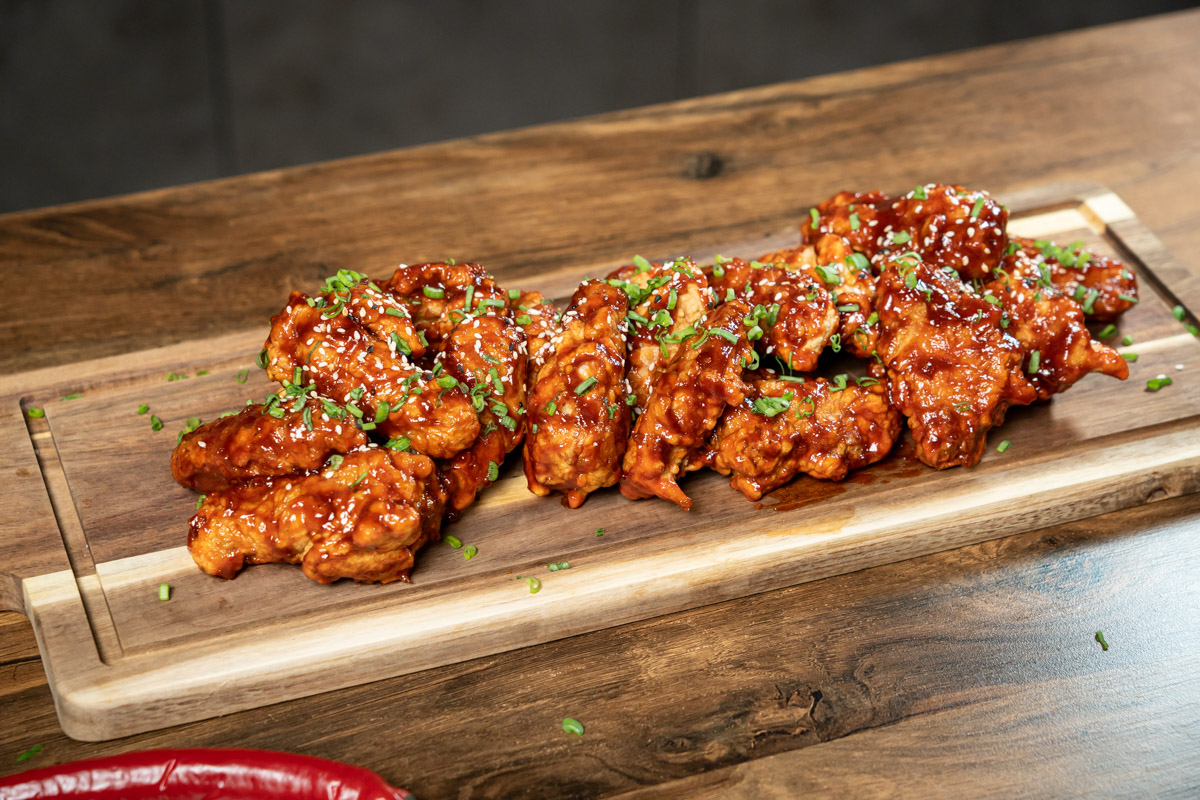
- Chicken wing: The main ingredient that provides the protein base for the dish.
Marinade:
- Ginger: Adds a warm, spicy flavor and aroma to the dish.
- Garlic: Enhances the savory flavor and adds depth of flavor.
- Salt: Used to balance and enhance other seasonings.
- Pepper: Complements other seasonings and adds mild heat.
Sauce:
- Peanut oil: Used to cook and add nutty flavor.
- Gochujang: A Korean chili paste that adds a spicy and savory flavor.
- Tomato Ketchup: Adds sweetness, heat, and richness to the sauce.
- Honey: Adds sweetness and helps balance the spicy and hot flavors.
- Rice Vinegar: Adds acidity and brightens the sauce.
- Salt: Enhances flavor and balances sweetness.
- Soy Sauce: Provides umami depth and spicy taste.
- Water: Aids in achieving the desired consistency of the sauce.
- Garlic: Adds complexity and depth of flavor to the sauce.
Frying:
- Frying oil: Is used to fry the wings until they are crispy.
- Eggs: Help starch and flour stick to wings to crisp them.
- Potato Starch: Gives fried chicken a light, crispy texture.
- Flour: Helps create a crispy outer coating on the wings.
- Green Onions: Used as a garnish to add freshness and color.
- Sesame Seeds: Used to add a nutty flavor and a visual appeal to the dish.
How to make Korean Fried Chicken?
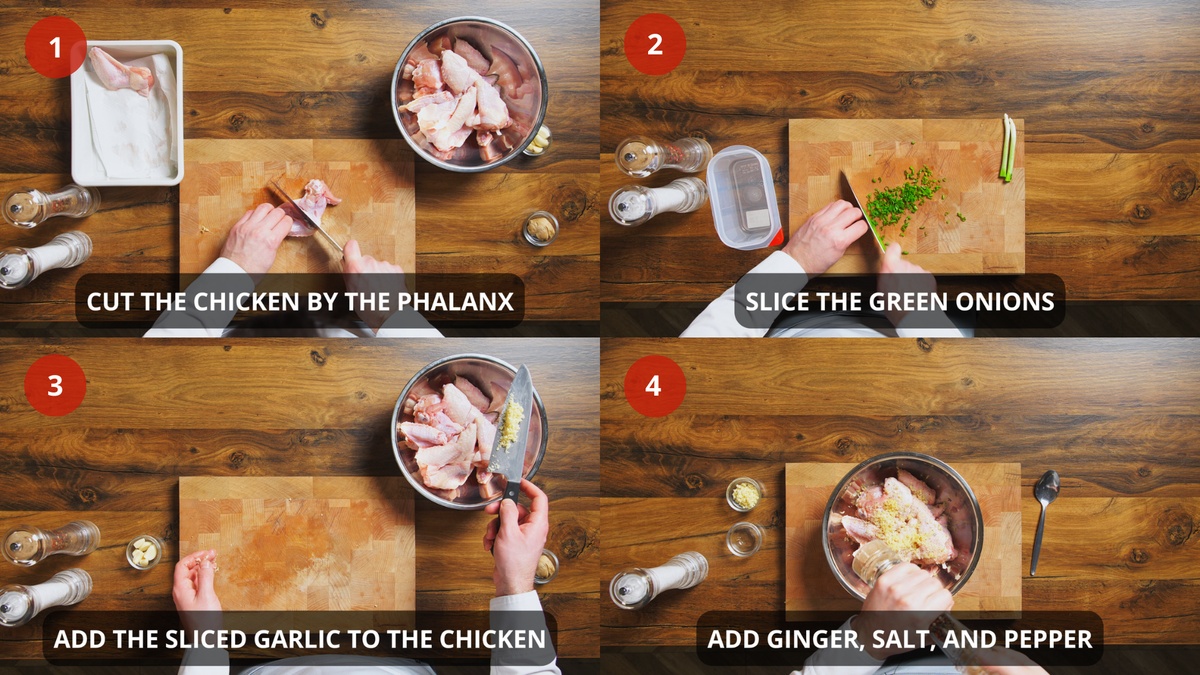
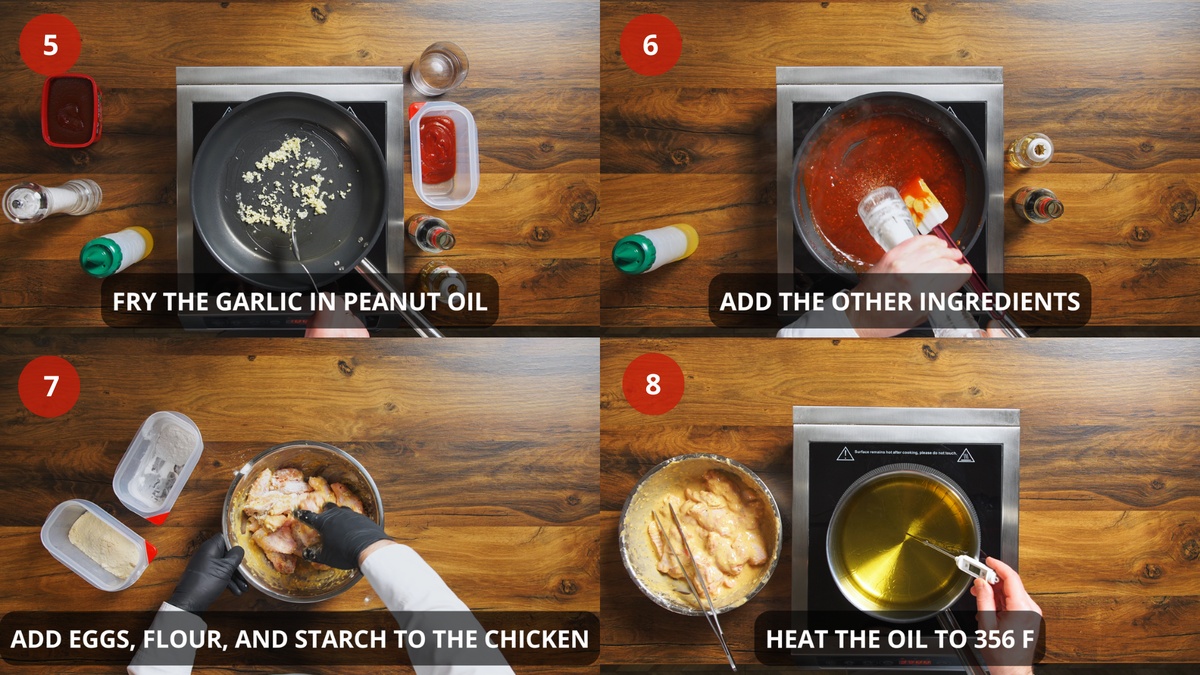
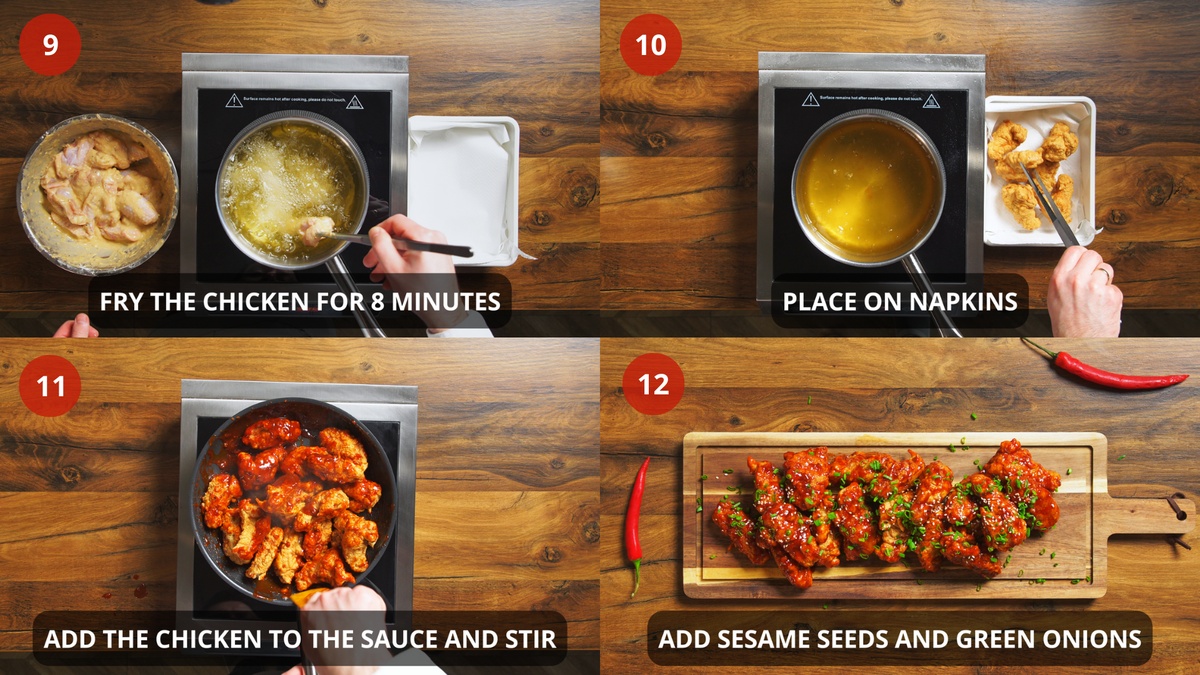
- Firstly, cut the chicken by the phalanx and dry it with napkins.
- Slice the green onions.
- Then, finely dice all the garlic. Set aside 4 cloves for the sauce and add 4 cloves to the chicken.
- Peel the ginger with a spoon, dice it, and add it to the chicken. Add salt and pepper to taste. Place in the refrigerator to marinate for 30-60 minutes.
- To make the sauce: Heat peanut oil in a frying pan, add garlic and fry for 2-3 minutes until golden brown.
- Then, add the gochujang paste, ketchup, rice vinegar, soy sauce, honey, water, and salt. Stir and cook over low heat until thickened.
- Add eggs to chicken and stir. Add flour and starch. Mix well.
- Pour the oil into a saucepan and heat to 356 degrees F (180 degrees C).
- Then, place the chicken in the hot oil and fry until golden brown, about 8 minutes.
- Place fried chicken wings on napkins to remove excess fat.
- Put the sauce on the stove, heat it up, add the chicken to the sauce, and stir to coat it with the glaze.
- Place on a plate and sprinkle with sesame seeds and green onions. Enjoy!
Chef Recipe Tips:
- It is ideal to serve with rice, kimchi cabbage, or a salad of smashed cucumbers.
- You can use any part of the chicken, not just the wings.
- If you don’t like spicy food, reduce the amount of gochujang paste to one tablespoon.
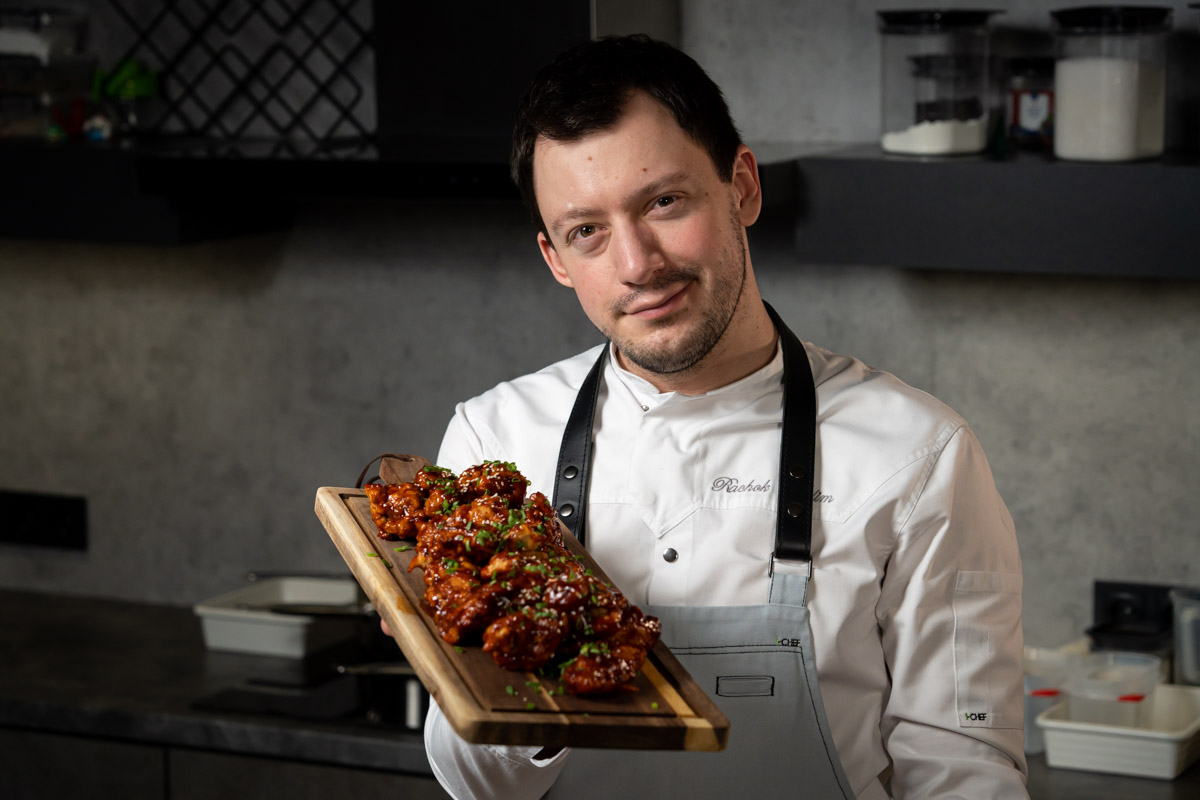
What is Gochujang?
Gochujang is a type of fermented red chili sauce or paste that originates from Korea and has a smoky-sweet and slightly spicy flavor. The spiciness level may vary between brands. Personally, I enjoy using the paste version over the sauce for a more robust flavor. It’s an excellent ingredient to add to sauces and marinades due to its ability to provide a combination of heat, richness, tanginess, and a hint of sweetness. I use it in various recipes such as beef bulgogi, pork ramen, Korean steak grilled cheese, and sticky Asian ribs, among other dishes.
Side Dishes to Serve With Korean Fried Chicken

- Kimchi: This traditional Korean side dish is made from fermented vegetables, usually cabbage or radish. It adds a tangy and spicy kick to balance the richness of the fried chicken.
- Pickled radish (danmuji): This sweet and spicy pickled radish is often served with Korean fried chicken to freshen the palate and provide a crunchy contrast.
- Steamed Rice: A simple bowl of steamed rice can help balance the flavors and textures of the fried chicken, providing a neutral base from which to enjoy the meal.
- Korean-style slaw: A lighter alternative to traditional slaw, Korean-style slaw incorporates ingredients like cabbage, carrots, and mayonnaise with a touch of vinegar and sugar for a refreshing side dish.
- This chewy rice cake cooked in a spicy-sweet sauce is a popular Korean street food snack and a delicious accompaniment to Korean fried chicken.
- Seasoned Beansprouts (Kongnamul Muchim): Add a crunch and flavor to your meal with lightly blanched bean sprouts tossed in a seasoned dressing of soy sauce, sesame oil, garlic, and green onions.
- Fried Mandu (Dumplings): A satisfying side dish that pairs well with Korean fried chicken, these crispy fried dumplings are filled with savory ingredients like pork, vegetables, and tofu.
- Japchae: Korean fried noodles with yam, vegetables, and beef or tofu are hearty and tasty accompaniments to fried chicken.
How Do You Reheat Korean Fried Chicken?
I prefer to serve the Korean fried chicken immediately after cooking, as that is when it will be the crispiest. However, if you need to store it, you can cool it down, cover it, and refrigerate it for up to a day. Then, when you are ready to eat, you can reheat it in the oven (covered) for 10-15 minutes at 190C/380F until it is piping hot throughout.
If you would like to keep the chicken crispy, ensure that you fully cook both the chicken and the sauce. Once cooked, cool them and cover them, but keep the sauce separate from the chicken. You can then refrigerate them for up to a day. To reheat the chicken, put it in the oven uncovered at 190C/380F for 10-15 minutes until it is piping hot throughout. As for the sauce, reheat it in a pan until it is piping hot.
I'm confident that this method of preparing "bland" chicken breast makes it very tasty, but unfortunately, I cannot recommend this dish for those aiming for a healthy diet. Here, we can see a significant amount of simple carbohydrates in the ingredients (from flour, honey, and brown sugar), a fair amount of fat (from oils), and a relatively long list of ingredients in general (while a healthy diet typically involves minimal ingredients). Furthermore, the cooking method turns the lean chicken meat into a carcinogenic product because any frying in oil and batter until golden brown (which is irresistible, I understand) creates glycation products that are carcinogenic.

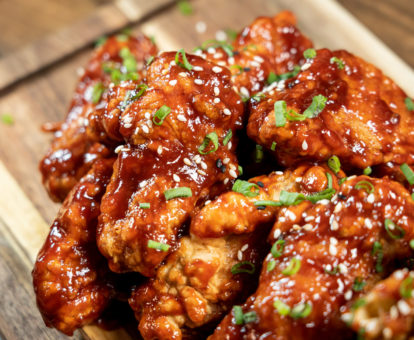
Cut the chicken by the phalanx and dry it with napkins.
Slice the green onions.
Finely dice all the garlic. Set aside 4 cloves for the sauce and add 4 cloves to the chicken.
Peel the ginger with a spoon, dice it, and add it to the chicken. Add salt and pepper to taste. Place in the refrigerator to marinate for 30-60 minutes.
For the sauce: Heat peanut oil in a frying pan, add garlic, and fry for 2-3 minutes until golden brown.
Add the gochujang paste, ketchup, rice vinegar, soy sauce, honey, water and salt. Stir and cook over low heat until thickened.
Add eggs to chicken and stir. Add flour and starch. Mix well.
Pour the oil into a saucepan and heat to 356 degrees F (180 degrees C).
Place the chicken in the hot oil and fry until golden brown, about 8 minutes.
Place on napkins to remove excess fat.
Put the sauce on the stove, heat it up, add the chicken to the sauce, and stir to coat it with the glaze.
Place on a plate and sprinkle with sesame seeds and green onions.
* Percent Daily Values are based on a 2,000 calorie diet. Your daily values may be higher or lower depending on your calorie needs.
** Nutrient information is not available for all ingredients. Amount is based on available nutrient data.
(-) Information is not currently available for this nutrient. If you are following a medically restrictive diet, please consult your doctor or registered dietitian before preparing this recipe for personal consumption.
Powered by the ESHA Research Database © 2018, ESHA Research, Inc. All Rights Reserved
To maintain that irresistible crispiness, savor the Korean Fried Chicken immediately after cooking. If storing, refrigerate and reheat in the oven for the best texture. For an extra layer of flavor, consider using gochujang paste for a robust profile in the sauce. Enjoy the moment without distractions—let the flavors steal the show! 🍗🌶️🔥

